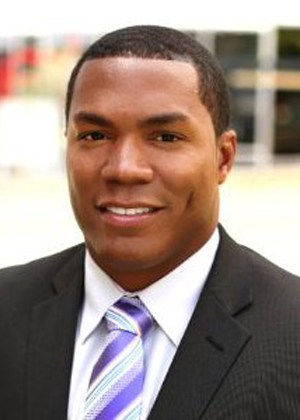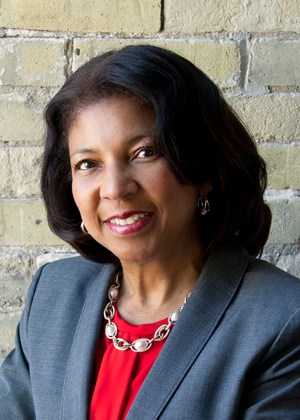By 2025, the Metropolitan Milwaukee Association of Commerce wants to see 12,000 more African American and Hispanic employees, and 875 more managers of color, in the region.
That vision traces back to a 2018 survey, in which Milwaukee area business leaders identified racial disparities as the region’s biggest Achilles’ heel.
It wasn’t the first time Milwaukee’s well-documented segregation problem and racial wealth gap had been identified as liabilities standing in the way of Milwaukee’s economic progress, as assessed by the MMAC’s regular surveys of its members. But it was the first time the issue rose to the top of the list.
“In all the years of doing this (membership survey), the issues tend to be in the same buckets; it’s taxation, it’s infrastructure, it’s health care,” said Julie Granger, executive vice president of MMAC. “And certainly the issue of racial disparity has come up before, but never had it come up so consistently and prominently. (In the 2018 survey) it came up as the number one issue among both our board members and members at large.”
Data bear out what more than 500 corporate executives and business leaders agree is a glaring problem.
A recent study of metro Milwaukee and 20 of its peers (similar-sized U.S. metro areas) – commissioned by MMAC in response to the survey results – showed the region ranks poorly on several measures related to the financial health of minorities in the region.

Milwaukee’s ranking when it comes to African American prosperity? Last among 21 medium-sized cities.
Its Hispanic prosperity? Last again.
The prosperity gap between African American and white residents, and between Hispanic and white residents? The widest among peer cities.
“What the data confirmed and amplified was what we intuitively know is a big issue in Milwaukee, but somehow when you put it in black and white, you can see how stark the difference is,” Granger said.
Making Milwaukee a “region of choice”
That data is the catalyst behind a new five-year initiative for the MMAC.
At the chamber’s biennial All Member Meeting on Sept. 26, leaders unveiled its “Region of Choice” initiative, which includes two targets to increase the diversity of southeastern Wisconsin’s workforce by 2025.
The first is to increase diverse management among chamber member organizations – a group that includes about 1,800 employers – by 25%. The second is to increase total employment of African American and Hispanic workers by 15%.
Currently in metro Milwaukee, African American employees make up about 14% of the total employment among firms with over 100 employees, and just under 5% of management. Hispanic/Latino employees make up 8% of all employees and 3.4% of managers.
If MMAC’s initiative is successful, the combined number of African American and Hispanic managers in the region will increase from 3,500 to 4,375 in five years. And the total employment of those groups will increase from 81,000 to 93,000.
MMAC is asking the region’s CEOs to sign a corporate pledge, vowing to report the company’s baseline data for African American and Hispanic employees, participate in best practice sharing with peers, review its strategies annually, publicly acknowledge its participation in the pledge and recruit others to join. As of Sept. 23, 61 CEOs had already signed on.
Granger said management diversity has been identified as one area that MMAC can use its platform to move the needle on a multi-faceted issue of racial inequality.
“When you look at an organization like ours … and our role in the community as a chamber of commerce for the region, said in its most basic terms, our role is to reduce the liabilities that exist in the community and enhance our assets,” Granger said. “So that’s really how we’re approaching this problem; it’s to say, what can we, as a business community representing 1,800 member businesses, do to impact these numbers?”
The current labor market has presented a strong business imperative to do so.
The widening gap between job openings and workers ready to fill them could result in about 35,000 unfilled openings in the region in the next three years, according to MMAC.
Meanwhile, the city of Milwaukee’s population has decreased for four consecutive years, running counter to national trends, in which peer cities have experienced growth over the past decade.
Compounding on those factors is an aging workforce, changing community demographics and the importance millennial employees place on workplace diversity and inclusion.
This isn’t the time to leave any segment out of the talent pool.

“We are at a crux in time when leveraging different talent pools is going to be imperative for organizations to remain sustainable for the future,” said Christopher Rowland, chief diversity officer of Milwaukee-based ManpowerGroup and a member of the MMAC committee that steered the diversity and inclusion research work. “It presents a great opportunity to think a little bit differently, challenge ourselves individually and collectively on how we engage certain populations to meet the demands of this talent shortage that we’re in.”
“The intent of diversity is not solely just because it’s the right thing to do,” he added. “It’s because it provides business value, makes organizations stronger, makes communities stronger. It creates growth.”
Milwaukee’s historical disparities
Racial disparities in the corporate sector – and the region’s chasmic racial prosperity gap – are the result of several historical forces, including the boom and bust of the manufacturing industry, the resulting loss of jobs in the 1980s, the disinvestment in central city neighborhoods, homeownership challenges and the Great Recession, according to Eve Hall, president and chief executive officer of the Milwaukee Urban League.

“At one point, Milwaukee was a great place for African Americans, owning homes, education, sending their children off to school, because there were jobs that really presented a variety of skills,” Hall said. “The jobs that were available didn’t necessarily require a college or postsecondary degree, so it made it much easier for all parts of the community, especially the African-American community, to participate. Once that was lost, we began to lose ground.”
The struggle to recoup lost jobs combined with the lasting impact of restrictive housing practices and high incarceration rates, particularly among black men, have contributed to troubling data that have earned Milwaukee’s spot on some unfavorable lists, including the most segregated U.S. cities and, recently, the “worst cities for black Americans” list released by 24/7 Wall St.
Those bleak statistics can negatively influence professionals’ desire to stay in the area when advancing in their careers, according to Hall.
“As much as there are many attempts by many different diverse groups to come up with ways in which we’re more closely working together and trying to expand perspectives on how communities of colors are seen, those who are trying to pursue jobs, if they’re outside of Milwaukee, always have to be concerned about whether they’re going to be welcome (here),” Hall said. “So, we have a lot of work to do, especially when we’re talking about maintaining talent or encouraging people to look at different opportunities, whether here in the city or outside the city.”
The research
Underpinning the MMAC’s 2025 goals is eight months’ worth of data gathering, focus groups, feedback and planning.
That process involved surveying minority managers from some of the region’s largest employers, including Advocate Aurora Health, Ascension, Northwestern Mutual, GE Healthcare and Froedtert Health, to understand the main barriers to advancement among minority employees.
In total, representatives from 27 corporations and five public entities (the city of Milwaukee, Milwaukee County, Milwaukee Public Schools, Milwaukee Metropolitan Sewerage District and Milwaukee Area Technical College) opted to participate in the research process.

Segregation among Milwaukee’s communities – and the impediment that presents to creating cross-cultural social networks – emerged as a recurring theme in focus group discussions. Mistrust and tenuous community bonds lead some minority professionals to believe Milwaukee isn’t the place to start a career, and many said they only remain in the city because of family, MMAC documents show.
“That was a theme that kept coming up: even if you feel like you’re in a great place in your job, you’ve been given opportunities, you have great relationships with coworkers, you’re probably not going to stick around long if, when you go home at night, you don’t feel welcome in the community in which you live and your kids get educated,” Granger said.
Other quantitative data underscored issues with company culture.
Just over half of African American managers polled, and 45% of Hispanic managers, reported feeling they had to downplay their culture in the workplace.
Two percent of African Americans, and 3% of Hispanics polled, reported having an internal executive caucus to advocate for their racial groups’ talent advancement.
“The same issues kept coming up over and over again,” Granger said of the survey responses.
“And they had to do with needing more representation in leadership positions, wanting their companies to be more transparent about how people actually get promoted and what are the pathways to that promotion, making sure that the HR processes were set up so there was a diverse team involved in the interviewing and hiring process.”
Participants in the research process also offered several recommendations of practical ways in which companies can pursue a more diverse workforce.
Among them were: investing in employee resource groups (ERGs), hiring an external facilitator to lead critical workshop conversations, reporting diversity and inclusion metrics in compliance reports, building a pipeline early by targeting school-aged children, providing mentorship to lead people of color through the corporate ladder and developing a standardized scorecard with performance criteria for identifying employees with high potential.
Rowland acknowledges that the process will look different for each company. An organization with 75 employees will pursue workforce diversity differently from a large corporation with an established diversity and inclusion arm of the company.
“There is not one silver bullet … one solution will not fix the issue,” he said.
For a small- or mid-sized company, working toward a more diverse workforce could start by offering an unconscious bias training class. Or it could band together with other companies to form employee resource groups. Or a larger company with more resources and experience could mentor a smaller company around best practices.
“There is room to grow and room to learn for companies of any size,” Granger said.

Other initiatives
MMAC’s effort coincides with several other recent efforts to promote economic and workplace equity in the region.
Separate from the Region of Choice initiative, a group of Milwaukee’s prominent Hispanic business and community leaders unveiled in January a concerted effort – called the Hispanic Collaborative – to improve economic opportunities and representation among Latinos in the region, with the ultimate goal of making metro Milwaukee one of the nation’s top 10 Hispanic communities.
The Hispanic Collaborative, which is also affiliated with the MMAC, is more than two years in the making.
It was prompted by a Greater Milwaukee Foundation-commissioned study in 2016 that examined the impact of Milwaukee’s Latino community. That study led to the creation of a “Hispanic well-being index,” which ranked Milwaukee 39th among the nation’s 50 largest metropolitan areas on measures such as education, prosperity and health.
Those behind the effort note that, at a time when Milwaukee struggles to bring in new residents, its Hispanic population has driven the region’s net population growth over the past two decades. Yet, Hispanic workers are underrepresented in higher-wage occupations. They are employed at less than half the rate of the overall workforce in occupations paying a median wage of at least $60,000, such as management, business and financial operations, health care practitioner and computer and mathematical occupations, according to a recent Wisconsin Policy Forum study.
The collaborative targets three strategic priority areas: finding strategies to move Hispanics to higher-paying and higher-skilled positions; increasing the number of Hispanic-owned businesses by linking them to the region’s innovation and entrepreneurial ecosystem; and increasing Hispanic civic participation through voting, public service and advocacy.

Nancy Hernandez, former president and founder of ABRAZO Multicultural Marketing and Communication, is leading the collaborative. She said there is “a lot of synergy” between the collaborative’s work and MMAC’s initiative.
For example, MMAC’s research revealed that Hispanics with bachelor’s degrees are less likely to choose to work in corporate settings than the population as a whole, including the African American community. That trend is one factor that could influence earning potential for Hispanic workers, Hernandez said.
“That’s something we’ve been able to uncover in tandem (with MMAC’s initiative), and hopefully we’ll be putting together some greater awareness around that and strategies, along with other educational initiatives, so we can close that gap,” she said.
Meanwhile, the Diversity Leadership Society of the United Way of Greater Milwaukee & Waukesha County is simultaneously working toward a 2025 goal of its own: reducing unemployment among African Americans in the Milwaukee area by 15%.
According to a 2017 report from the National Urban League, the Milwaukee metro ranked last among 71 urban areas for its unemployment gap between African American and white Americans. Unemployment for black Americans was 13.8%, while unemployment for white Americans in the area was 2.7%.
The United Way donor network plans to change those statistics by financially supporting adult education and transportation programs, advocating for laws that reduce employment barriers for non-violent offenders and researching why diverse talent leaves the region at high rates.

Samantha Mitchell, the United Way of Greater Milwaukee & Waukesha County’s engagement manager for diversity and inclusion initiatives, said the work to reduce African-American unemployment feeds into the goals MMAC is pursuing around workforce and management diversity.
“We’re connecting people to employment; you have to start with diverse thought and get all the key players at the table and figure out ways to get people closer to employment,” Mitchell said. “It’s important for every company to have diversity, equity and inclusion at the top of their strategic plans, which is what United Way is really honing in on now.”
While existing groups have worked for years to promote economic and professional equity – organizations like the Milwaukee Urban League and Hispanic Professionals of Greater Milwaukee, among others – Hall said she’s optimistic about the ways in which the MMAC coalition can enact change.
“What I appreciate about this new initiative by MMAC is that you now have a collective group of high-level executives and CEOs who are recognizing the racial disparities, who are recognizing the fact that we really need to keep identifying ways to create a culture and environment here that offers opportunities, such as getting more people in management and C-suite positions, as well as looking at all other factors that can make or break our efforts of talent attraction,” Hall said.

Granger has described the cultural change that MMAC is seeking as a “journey of a thousand steps.” She’s confident now is the time to embark on it.
“The realities of the talent crunch employers are currently facing is, ready or not, we have a severe talent crunch on our hands,” she said. “If we don’t look at maximizing all the talent that we have, whether that’s people who are currently on the sidelines or those currently within the ranks of our workforce and could ascend to higher positions, that’s just withholding our own growth. We have to get out of our own way.”
Steps to building a more diverse company
Participants in the MMAC’s research process made recommendations of practical ways in which companies can pursue a more diverse workforce. They include:
- Investing in employee resource groups.
- Board sponsorships for people of color.
- Hiring an external facilitator to lead critical workshop conversations, in which people can share their real-life experiences.
- Including diversity and inclusion metrics in company’s compliance report.
- Integrating mentorship to lead people of color through the corporate ladder.
- Targeting younger, school-aged children to build the talent pipeline.
- Developing a public scorecard rating companies’ diversity and inclusion metrics and the population the company serves, partners with or provides business.
- CEOs should experience the culture of their employees and observe those who are not in managerial roles.
- Building objective measures that are publicly shared.
- Developing a standardized scorecard with performance criteria for identifying employees with high potential.
- Creating space for internal/external coaches to be assigned to African-American and Latino employees.


